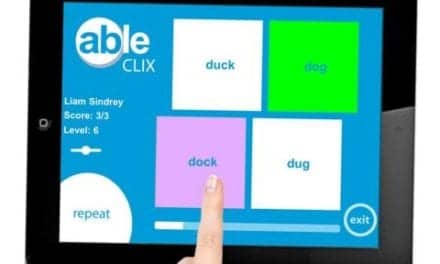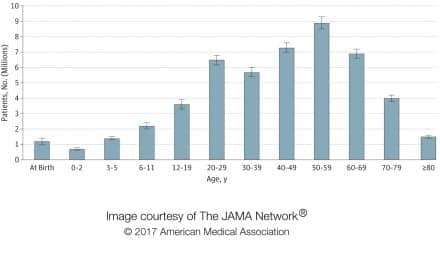A few miles south of downtown Los Angeles, the celebrated John Tracy Clinic is situated in the University Park North district whose derivative name belies an area that, as one of the city’s oldest neighborhoods, is both historically significant and architecturally rich. At either end of the stretch of West Adams Boulevard where the clinic can be found are two landmark churches: St. Vincent de Paul, completed in 1925, to the east and the Second Church of Christ Scientist, finished in 1910, to the west. Directly across the street from the clinic is the Doheny campus of Mount St. Mary’s College, comprising some two blocks of Queen Anne-style mansions built at the turn of the century. And to the south lies another institution of higher learning that might be more familiar: the University of Southern California, created in 1880.
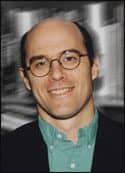
|
| THE WORKHORSE: The Welch Allyn GSI 33 Middle Ear Analyzer used by the John Tracy Clinic. |
While the nonprofit John Tracy Clinic is easily the youngest institution among its esteemed neighbors, it is also historic in its own right. It was in 1942 that actor Spencer Tracy’s wife, Louise Treadwell Tracy, along with 12 mothers of deaf preschool children, established a support group that later that year became a clinic named in honor of the Tracys’ deaf son. In the years since, spent advancing its mission to open the doors of communication for parents of young children with hearing loss, it has become internationally renowned as a pioneer in the field of auditory-oral, early childhood deaf education.
And so it was last December that I arrived inside the clinic’s lobby to meet Director of Audiology Christine Eubanks who had made room in her busy schedule to accommodate my request for a tour. She showed me around the audiological examination facilities and walked me through its preschool programs taking place. She detailed the demonstration home parent/infant programs, and I learned about the clinic’s teacher education program in collaboration with the University of San Diego, as well as its variety of distance education courses available to professionals and families with deaf or hard-of-hearing children practically the world over.
At the end of the informative and inspiring visit, I wondered to Christine if I could come back and spend some time observing the audiological examinations the clinic administers free of charge, and she said sure.
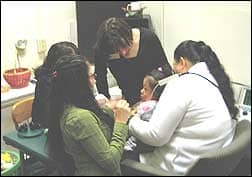
|
| ALL FOR ONE: During her examination, 2-year-old Milagro sits in her mother’s lap while being attended by audiometrists Melissa Cabrera (foreground) and Erika Aguilar (rear). Pediatric audiologist Florence Himelfarb (center) looks on. |
And so it was that I was back in the lobby a week later meeting the clinic’s two Melissas: audiologist Melissa Himmelman and audiometrist Melissa Cabrera, who, prior to their first patient’s arrival, did more than talk me through what an examination entails—they gave me one.
If you’ve read my Editor’s Message in the January/February issue of Hearing Products Report, you may recall that things took a bit of a disconcerting turn right away when both my ears registered fails after an otoacoustic emissions (OAE) test was administered by Himmelman. To reassure me that it wasn’t the end of the world, she subjected me to a more traditional middle ear screening, which thankfully showed my hearing to be in the normal range. She did temper my relief by pointing out that one ear (I forget which one) was at the bottom of that spectrum; before I could wonder if that was worth worrying about, pediatric audiologist Florence Himelfarb and audiometrist Erika Aguilar arrived with the first patient and it was time to get out of the way so they could get down to business with 2-year-old Milagro.
Anyone reading this who’s familiar with the administering of hearing tests to children preschool aged or younger doesn’t need me to tell them the persistence that can be required.
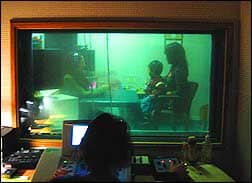
|
| IN THE BOOTH: Observing through one-way glass, pediatric audiologist Florence Himelfarb operates the clinical audiometer while audiometrist Melissa Cabrera keeps 2-year-old Nathan focused as his mother looks on. |
“Some tests take 10 minutes,” Himmelman tells me. “Some can take an hour and a half.”
Milagro’s ended up taking 30 minutes, at one point with Aguilar, Cabrera, and Himelfarb surrounding the little girl, working patiently and caringly together to try to get a conclusive reading from her left ear as she sat on her mother’s lap in the small room. Ultimately, the only conclusion they could come to was that mother and daughter would have to return in 3 months to retest. While they got a great response from the right ear, the left ear wasn’t cooperating—something Himelfarb told Milagro’s mother (with Cabrera translating to Spanish) could be attributable to the cold her daughter currently had.
Next in the room were Nathan and his mother. With only 3 months remaining until he turns 3, Nathan had been evaluated by a regional center, which recommended an audiological examination since he’s exhibiting a speech delay and has a vocabulary of between 10 and 15 words.
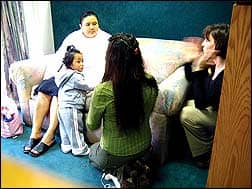
|
| DO OVER: At the conclusion of Milagro’s examination, pediatric audiologist Florence Himelfarb (right) explains that Milagro’s cold might be the reason why the results from her left ear were inconclusive and she will have to return in about 3 months to retest. Audiometrist Melissa Cabrera translates to Spanish. |
Whereas Milagro did not much like having things put in her ears, Nathan had no problem wearing the equipment and taking the test, administered by Himmelman and assisted by Aguilar. Not only did it proceed smoothly, but successfully as well. He passed the screening in both ears and his eardrums showed no sign of infection.
In the time it took for Nathan and his mom to exit, the next test was under way with Christian, who would be 3 years old the next day. This was a return trip for the little boy and his mother, who’d last been to the clinic for an OAE exam and now were back for a middle ear screen, throughout which Christian just didn’t seem very engaged and thus was not very reactive. With Cabrera assisting and Himelfarb in the booth working the Welch Allyn GSI 33 Middle Ear Analyzer, her instincts told her that there was nothing wrong.
“My feeling is he’s fine,” Himelfarb says.
Last but not least—but definitely littlest—came 6-week-old Alexander with his parents. Napping quietly on his father’s lap with mom looking on, Himmelman performed an OAE exam—the same that I’d failed first thing that morning. I’m happy to report Alexander did not share my fate.
“Everything looks great,” said Himmelman enthusiastically, and soon the family was on its way, leaving the audiology staff awaiting their next patient, and this observer with a deeper appreciation for the John Tracy Clinic and the services it provides to the community.


